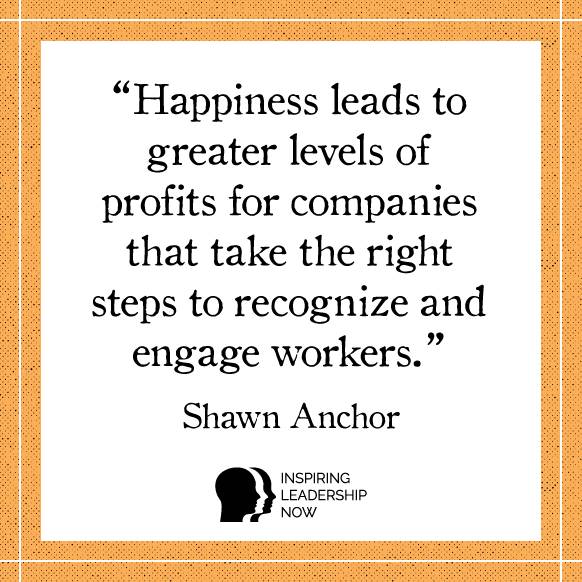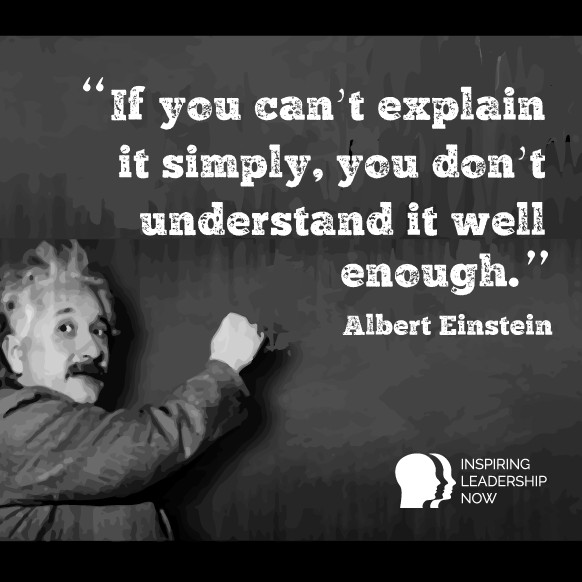Last updated: 15 August 2019

Very few people make it through their professional lives without encountering at least one horrible boss… unfortunately.
Most of the time you can make it through the day without feeling their wrath. Other times, you’re not so lucky.
Some bad managers invoke staff pity more than anything else. Others can drain the lifeblood out of an organization.
In either case, poor leadership makes coming to work each morning all the more difficult.
But what happens when bad leadership persists for months, years and even an entire career?
If you’ve experienced this, you’re probably no stranger to how much bad leadership hurts your psyche… but what does it do to your productivity?
If you haven’t thought about this subject, you’re certainly not alone. Amid the large volumes of managerial literature out there, the link between leadership and productivity isn’t emphasized nearly as much as it should be.
This is problematic given the huge importance productivity plays in the workplace. Unlocking the power of productivity is one of the biggest challenges businesses face.
So, What Is Productivity, Anyway?
Now more than ever, HR managers and executives are beginning to quantify productivity to measure business success.
When it comes to the world of work, productivity refers to total output per hour worked.
In other words, it’s the average amount of “stuff” you produce while you’re at work.
Because it’s measurable, productivity also has a formula (don’t worry, you won’t have to calculate anything!)
But needless to say, productivity is a pretty big deal for organizations. A more productive workforce lowers costs, increases profitability and allows for innovation.
Whereas an unproductive workforce leads to stagnation, less profits, demotivation and ultimately less work being produced.
And although it’s easy to label unproductive workers as being “lazy,” the line separating them from their more productive counterparts is finer than you might think.
This is because leadership and management styles also play a big role in how productive a team or person is.
Make no mistake, your leadership approach has a direct influence on an organization’s ability to achieve its goals.
This is true of the CEO as well as mid-level managers. How you go about your business has a direct influence on staff motivation, satisfaction and overall performance.
The extent to which workers are happy and performing optimally can dictate the entire success of an organization.
This is called organizational efficiency, and it pretty much makes or breaks how businesses function.
This feedback loop relies on workers contributing in meaningful ways. And that’s where leadership steps in.

A great leader can influence all 3 things for the better.
Notice, we say “leader” and not “boss.”
While a boss can create a sense of urgency to get a job done, only a leader can motivate and encourage employees to take their performance – and thus their career – to the next level.
At the same time, a bad leader can crush worker productivity just as easily. If you’ve ever worked under an uninspiring boss, you may have found that the only thing they’ve inspired you to do is run away the first chance you get!
And that’s exactly what’s happening.
Industry research shows that 3 out of every 4 full-time workers are either actively looking for a job or open to new opportunities.
This startling research clearly shows that most people are simply not satisfied with their current employer, and may also be unhappy with the actual work they are doing.
It’s hard to imagine that workers are operating at peak productivity when their head is on a swivel for the next opportunity to come knocking.
Bad Bosses Are The # 1 Cause of Unhappiness In The Workplace
As mentioned earlier, worker productivity can be measured by the internal motivation of the individual, the performance standard of the team and the overall company culture.
While bad leadership begins externally (at the team or company level), it can infect a worker’s morale and zap their motivation.
A 2015 survey conducted by The Huffington Post about what makes people unhappy at work found a direct relationship between leadership and happiness.
Take a look at these eye-opening findings:
- 40% of workers mention “a lack of help and support from my boss” as the main cause of their most recent bad work day.
- 37% say “uncertainty about the workplace’s vision and strategy” is a primary cause of unhappiness.
- 35% of people name bad behavior from their boss as one of the root causes of unhappiness at work.
- Almost 2 out of 3 employees have at least one bad day at work every single week. One in 5 says every day or almost every day is considered a bad work day!
Happiness and Productivity: An Unmistakable Link
A 2015 study published in the Journal of Labor Economics by professors at the University of Warwick found that happier people are more productive in pretty much anything they do.
The researchers conducted 4 different experiments involving 700 participants. During the experiments, a number of participants were either shown a 10-minute comedy clip or treated to free food and drinks. These were referred to as “happy shocks.”
Others were questioned about “real-world shocks,” such as bereavement and family illness.
Both groups were then asked to perform certain tasks to measure their productivity.
The results showed that the recipients of the “happy shocks” went on to become 12% more productive than the control group.
The study also found that lower levels of happiness associated with the “real-world shocks” are systematically tied to lower productivity.
The authors had a word of advice for managers:
“We have shown that happier subjects are more productive, the same pattern appears in 4 different experiments. This research will provide some guidance for management in all kinds of organizations, they should strive to make their workplaces emotionally healthy for their workforce.”
The link between happiness and productivity is further elaborated by Shawn Anchor, author of The Happiness Advantage, who says:

This research confirms what some of the world’s most successful companies already know: that happiness results in higher productivity without sacrificing quality.
Google has documented this for years. By investing in employee happiness, Google has reported a 37% rise in workforce satisfaction.
When people are happier, they get more stuff done – period.
5 Familiar ‘Bad Boss’ Types and How They Kill Productivity
Now that we’ve established the causal link between happiness and productivity (and the role of bad leaders in breaking the value chain), let’s take a look at some concrete examples of bad boss types.
If you’re an employee, there’s a pretty good chance that one (or more) of these bad boss types are responsible for your anxiety, stress and general unhappiness in the workplace.
If you’re an aspiring leader, you will get a better sense of how not to act if you want to win over the hearts, minds and hard work of your followers.
1. The Credit Taker
These bosses don’t train or lead their employees – they use their power of authority to compete with them.
The Credit Taker takes the credit for your hard work, even without you knowing it, and always has a plan to keep you in your place and not recognize any of the great work you do.
2. The Micro Manager
While the Micro Manager has more to offer than the Credit Taker, unfortunately, they take this too far by micro-managing every aspect of your work.
The Micro Manager is usually insecure about letting go of the wheel. At their worst, they breathe down your neck all the time and watch your every move. Rather than make you feel like a valued professional, the Micro Manager makes you feel like you’re in middle school.
Micro managers are usually not comfortable with letting you set your own schedule. They also make you feel like everything needs an audit trail to “prove” you actually did it. This lack of trust can make you feel more stressed and hinder your productivity.
3. The Bully
The Bully isn’t as prevalent as he or she used to be. You know, things like labour codes and anti-harassment laws stifle their ability to attack and insult you.
But depending on your industry, the Bully still exists. They’re usually high energy, assertive and competent, but instead of inspiring you they bring you down.
The Bully kills your productivity by raising your cortisol levels and making you anxious. This is the one sure-fire bad boss type that will encourage people to run for the exit the first chance they get.
4. The Ghost
Whereas the Micro Manager wants to control every aspect of your work, the Ghost tends to take a hands off approach to… well, just about everything.
A boss who keeps his or her distance is definitely a good situation to be in, unless they’re never around. For the Ghost, the office is nothing more than a pitstop in between offsite meetings and personal errands.
Don’t expect any feedback, let alone regular updates on any new projects. There may also be a long lull time in between assignments, which will leave you directionless and without purpose.
The Ghost probably had success earlier in their career, but has decided to mail it in from here on out. Your career, and your aspirations, aren’t really relevant.
5. The People Pleaser
Being a people pleaser isn’t necessarily a bad thing, especially in a professional workplace environment. But sometimes positions of authority require decisive action. This is where the People Pleaser, often called the Best Friend, is at a loss.
These guys and gals are normally promoted from within. While they may have achieved success in their previous role, they really aren’t cut out to be leaders – at least not yet.
Don’t expect the People Pleaser to provide you with any sense of direction because they’re often too busy making sure everyone to be happy with their own performance.
The Best Leadership Qualities for Boosting Productivity
If you’re an employee or aspiring leader who cares about being productive, a bad boss is someone you’ll want to avoid. Instead, you should focus on these 5 traits of highly productive people.
1. Proactiveness
One of the most common traits of all successful people is proactiveness. Instead of waiting for a problem to come to them, they seek to address it before it becomes a major issue.
Someone who’s willing to lead by example is amazing to work for and work with.
This combination of tenacity and an impatience with idleness is an empowering trait that has a way of inspiring others to adopt the same approach.
2. Strong Communication

Whether you’re in a leadership role or aspiring to manage others one day, if you can’t communicate your vision effectively… it’s going to be difficult to inspire others to follow suit, isn’t it?
Effective communication ultimately ensures everyone is striving toward the same goal which allows for growth, innovation and profitability.
3. Problem Solving
Great leaders really stand out by the way they identify and resolve problems. If you really think about it, problem solving is the essence of what leaders actually do.
It requires you to be courageous enough to tackle problems even when they don’t seem apparent to everyone else.
It’s therefore no surprise that bad bosses are usually poor problem-solvers.
They may be reactive instead of proactive, or they harbour a negative attitude towards unforeseen events. This approach to work and life rarely prepares one to be an effective problem solver.
4. Setting Priorities (And Following Through With Them)
When it comes to goal setting, creating lists outlining the steps you need to take is no doubt useful.
This is because the act of writing something down will not only help clarify your vision further, but will motivate you to turn the dream into a reality.
But as the famous quote goes:
“Never confuse motion with action.” – Benjamin Franklin
So when setting goals or priorities, make sure you focus on what counts, rather than getting caught up in lists and menial tasks that don’t lead to results.
And as Brian Tracy advised in his book, “Eat That Frog,” always do your most difficult or important task first thing in the morning.
This “law of forced efficiency” gives you little choice but to create productivity.
5. Risk-Taking
While risk-taking doesn’t always lead to productivity, it does open you up to new experiences that forces you to step outside your comfort zone. In business and in life, risk-taking is necessary to grow beyond your present state.
While it can be scary, it does have a clever way of boosting your productivity in attainment of the goal you’re trying to reach.
Whether at an individual or organization level, the presence of risk brings people together in unique, meaningful and productive ways.
The threat of failure is sometimes necessary to get the best out of ourselves and others.
So to wrap up, while productivity may be talked about a lot these days, what’s missing from the discussion is how bad management affects productivity.
Leaders who can inspire others in positive and meaningful ways will get the most out of their team. Whereas bad leaders, on the other hand, sow the seeds of dysfunction that breeds unhappy and dissatisfied workers… which rarely translates into positive results.

